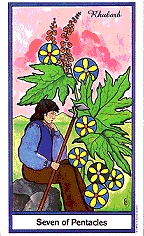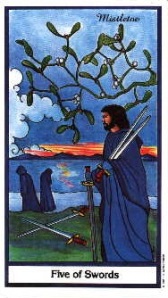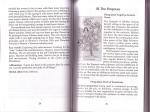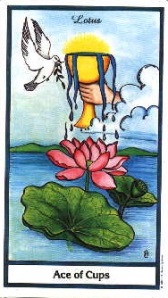 Merry Winter Solstice everyone! This mystical post comes to you just in time to celebrate your connection to the earth, the stars, and the seasons over this crisp holiday. Its been cold and icy but I’m still thinking about greenery. This piece was prompted by the gwg #16 – write dangerously, which was to write about something that was scary to you, specifically when it comes to gardening. This means scary in the sense that it was hard to share. I wanted to tell people this but was worried about what they would think, perhaps scaring people off. I’ve committed to it and I’m glad to share it. I hope it will open some eyes to a new way of thinking.
Merry Winter Solstice everyone! This mystical post comes to you just in time to celebrate your connection to the earth, the stars, and the seasons over this crisp holiday. Its been cold and icy but I’m still thinking about greenery. This piece was prompted by the gwg #16 – write dangerously, which was to write about something that was scary to you, specifically when it comes to gardening. This means scary in the sense that it was hard to share. I wanted to tell people this but was worried about what they would think, perhaps scaring people off. I’ve committed to it and I’m glad to share it. I hope it will open some eyes to a new way of thinking.
—
.
This summer I was part of zine camp, a writers retreat at a secluded river house in southwestern Washington. The setting was beautiful and I spent nearly all of my time outside (in Bigfoot country, apparently). One of the group sessions was about using Tarot for writing prompts. This was interesting in itself (and something I will write about specifically in the future) but I wanted to focus on this as a garden-related post for different reasons.
The first deck I picked up was the Herbal Tarot. I was hooked. Now stay with me here. Tarot seems to be something people love or just don’t understand (perhaps they don’t want to understand it), but it can be used as simply as reading your horoscope or telling a story. It’s a matter of taking the loose meanings and applying them in a way that makes sense to you, whether or not you believe them to be random or destiny. An added feature of the Herbal Tarot is being able to apply it to gardening or new ideas on using plants after the harvest. There are only so many ways to appreciate or think about them, and after spending so much time learning about gardening, identification, botany, and various applications (cooking, smelling, mixing, etc.) the idea of looking at them in a totally new way was really refreshing. Use the herbal tarot to consider incorporating new plants you may not have thought of before, as a way to reflect on the season, or read into the use and meanings of the plants in a way you probably never thought of before (such as herbalism practices). Give it a try!
..
A Brief Introduction to Tarot
 Tarot cards have major and minor arcana, and the minor are similar to playing cards. They have four suits and an elemental component – cups = water, swords = air, wands = fire, and pentacles = earth. These are all essential in gardening, when you consider fire as the sun of course. Each suit has cards numbered 1-10 plus a court, royal household, or face cards including a King, Queen, Knight, and Page. If you are interested in learning more about tarot specifically there are a lot of books and sites out there, and you can check out some selections I’ve included at the end.
Tarot cards have major and minor arcana, and the minor are similar to playing cards. They have four suits and an elemental component – cups = water, swords = air, wands = fire, and pentacles = earth. These are all essential in gardening, when you consider fire as the sun of course. Each suit has cards numbered 1-10 plus a court, royal household, or face cards including a King, Queen, Knight, and Page. If you are interested in learning more about tarot specifically there are a lot of books and sites out there, and you can check out some selections I’ve included at the end.
Here’s my example. If anyone has their own spread to share please do. I pulled these as a way to draw specific prompts that would eventually become a short story. I am no expert in tarot, this was my first attempt. Instead of pulling cards to reveal character or conflict like I first did you could look at this as past, present, and future, or as you’ll see later think about it as a more in depth look at the season as a whole.
.
An Herbal Tarot Spread
So you could simply say, “Hey, I’ll plant peony, eat some rhubarb pie, go for a hike through the junipers in the fall, hang mistletoe in the winter, and make note of the lovely lotus during a visit to the botanical garden.” You could read further into it, but that alone is pretty cool. It can help you appreciate certain plants that you may not otherwise focus on. You could pull a card each week and use that as a focus to study, to learn more about what it means to yourself, your practice, and the world at large. You can get into the elements a bit more. I didn’t pull any wands, which represent fire. This seems really fitting for this season, where a lack of heat and sunlight held back my own garden, among many others. This spread also had a heavy emphasis on water, which was very accurate this season with all of the rainfall. You can take what you want out of the tarot so don’t feel intimidated. Here’s what I came up with.
The suit of water here represents reflection, which is an important aspect of gardening. There’s also mention of the crescent moon, and if you’re into it you should read up on the way The Farmer’s Almanac looks at moon phases with specific plantings (light and dark of the moon). It’s pretty neat. Overall the High Priestess represents feminine power. Perhaps this relates to the gardener or with the plants themselves. You can’t get squash without those delicious female flowers. The peony represents harmonizing feminine energy within, and accepting and working with metamorphosis. There is metamorphosis right before our eyes, in every plant and within ourselves.
The Seven of Pentacles – Rhubarb
The suit of earth represents a reflection on the past while looking to what’s ahead –stepping back and reveling in the present. Whether or not the work is done you must move forward and gather strength for the hard work ahead. When I pulled this in August it was very true. I was away from home and thinking about all of the harvest I was missing while I was gone and was considering the shift for all that was to come -toward new fall growth, storage and use of the veggies that would be waiting for me upon my return, and the big clean-up for winter that would soon be necessary. Pentacles ask us to look into the connectedness to our talents while being rooted in the sensuality of living. Step back midseason and feel proud of your accomplishments. Rhubarb suggests tuning into the earth, inner joy, and encouraging flow. These traits speak volumes about what we get out of gardening, beyond the tangible food and flowers.
The Five of Swords – Mistletoe
 The suit of air represents the mind and the search for truth. This could reflect on the research we do through books, garden blogging, or actually getting our hands dirty. There are elements of struggle, a path of trials, and even protection from evil. It specifically asks you to overcome looking at a situation as a failure and not acknowledging the lessons being learned. Every defeat can be turned into knowledge that can be used for victory the next time it comes around. Consider the concept of conquest and unhealthy competition with an eventual defeat at the end of the season. “Defeat” meaning the inevitable death and hibernation that comes with winter, no matter how well you’ve groomed your garden. Mistletoe represents oak trees and protection, but also meditation and respect. In a literal sense it may be applied in a battle against aphids. This card in whole may be best read by a competitive gardener or someone that is consumed by attaining perfection from trying to tame wild things.
The suit of air represents the mind and the search for truth. This could reflect on the research we do through books, garden blogging, or actually getting our hands dirty. There are elements of struggle, a path of trials, and even protection from evil. It specifically asks you to overcome looking at a situation as a failure and not acknowledging the lessons being learned. Every defeat can be turned into knowledge that can be used for victory the next time it comes around. Consider the concept of conquest and unhealthy competition with an eventual defeat at the end of the season. “Defeat” meaning the inevitable death and hibernation that comes with winter, no matter how well you’ve groomed your garden. Mistletoe represents oak trees and protection, but also meditation and respect. In a literal sense it may be applied in a battle against aphids. This card in whole may be best read by a competitive gardener or someone that is consumed by attaining perfection from trying to tame wild things.
The Seven of Cups – Juniper Berries
We find water again. Literally juniper removes excess water from the body, which is an interesting use that I hadn’t heard of before. You’ll gain confidence from awareness, appreciate self-love, and find that all things are possible. The juniper brings purity, protection from negative thoughts, and invigoration. This IS gardening to me. It is a pure action, it helps release my mind from the negativity I fight in everyday life, and it invigorates me like little else can. I love what I do and who I am as I tend to my little plot of land. I gain confidence with each bit I learn and I feel like I can plant anything that speaks to me. When I look over these cards they make perfect sense and together tell the story of why I bother getting my hands dirty.
Our last card keeps us in water, where we will find inner peace, understanding, and overflow with love. There is a sense of peacefulness, knowing and enlightenment. This could all be found in the act of gardening itself – as it is happening or as an overall outlook. If feels like a good place to end, full of positivity and knowledge. The lotus shows us growth and specifically growing out of the murkiness. This is very literal, and makes me picture a tiny seedling rising out of a muddy patch on a sunny yet cool spring day. The process begins again. What new things will we come across as the season begins? What will the next year hold?
.
You can take this as a fairly serious, sometimes eerily accurate look at your own garden practice, or just consider it a fun way to think about gardening in a new light. I pulled these cards without my garden in mind and yet when I looked at their meanings it became so clear. Sometimes we get so into the basic mechanics of gardening that we forget to step outside of it and look at the bigger picture. With tarot and with gardening there’s a connection to the world around us that we rarely see elsewhere.
I hope you’ve enjoyed this and perhaps it inspired you to try something new. Let me know what you think or if you’ve been able to apply any of this yourself.
.
Further Reading
 The Herbal Tarot deck is pretty easy to find, by order through your local bookstore, a new age shop, or through amazon, etc.
The Herbal Tarot deck is pretty easy to find, by order through your local bookstore, a new age shop, or through amazon, etc.
I was able to read into the meanings of these cards with the help of The Spirit of Herbs: A Guide to the Herbal Tarot by Michael Tierra and Candis Cantin. This book is tough to find for a reasonable price since it appears to be out of print. You could try your local library or a specialty shop like a hippie/new age store or even a magic or mysticism shop. I’ve included a scanned section as a sample so you can see if the book is worth looking into for your self. Click on the thumbnails at the right.
 I looked through a number of books on traditional tarot before I decided on The Only Tarot Book You’ll Ever Need by Skye Alexander. It is a great introduction and only $9 retail. There are black and white photos of the cards, a little history, and approachable interpretations that make it easy to understand. Once you’ve got a hold of the basic ideas you can try a more advanced book for more learning opportunities.
I looked through a number of books on traditional tarot before I decided on The Only Tarot Book You’ll Ever Need by Skye Alexander. It is a great introduction and only $9 retail. There are black and white photos of the cards, a little history, and approachable interpretations that make it easy to understand. Once you’ve got a hold of the basic ideas you can try a more advanced book for more learning opportunities.
If you want to get further into the meanings of traditional cards there are a lot of good full color books with multiple interpretations. I’d recommend something with a spiral binding so you can have it lay flat as you look over the cards. Try Discovering Yourself Through the Tarot for a Jungian approach.
Good luck on your new adventure!

















































